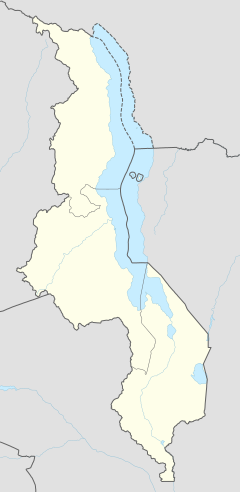Cape Maclear
|
Cape Maclear Chembe |
|
|---|---|

Otter Point, Cape Maclear
|
|
| Nickname(s): The Cape | |
| Location in Malawi | |
| Coordinates: 14°01′S 34°51′E / 14.017°S 34.850°E | |
| Country |
|
| Region | Southern Region |
| District | Mangochi District |
| Time zone | +2 |
| Climate | Aw |
Cape Maclear or Chembe is a town in the Mangochi District of Malawi's Southern Region. The town, situated on the Nankumba Peninsula, is on the southern shore of Lake Malawi and is the busiest resort on Lake Malawi. Cape Maclear is close to the islands of Domwe and Thumbwe on Lake Malawi, and is in Lake Malawi National Park.
In 1859, the missionary and explorer David Livingstone found the Cape, and named it "Cape Maclear" after his friend, the astronomer Thomas Maclear, who was Her Majesty's Astronomer at the Cape of Good Hope. In October 1875, a new mission, "Livingstonia", was set up by a group of members of the Free Church of Scotland. Before the missionaries arrived, the area was controlled by the Muslim Yao people. The graves of some of the missionaries are in Cape Maclear, overlooking the bay. Although Cape Maclear had a good harbour, the poor soil in the area, and the prevalence of the tsetse fly, meant a more suitable base had to be found; the mission moved to Bandawe, near Chintheche, in 1882.
Cape Maclear and its islands, forests and bay were declared a national park in 1980, creating the Lake Malawi National Park, the first freshwater national park in the world. In 1984, the area became a UNESCO World Heritage site. There are several breeds of bird at Cape Maclear, including kingfishers, Dickinson's kestrels, and freckled nightjars. There is a museum about the formation of Lake Malawi and its wildlife at Cape Maclear. UNESCO has recommended wildlife preservation at Cape Maclear.
...
Wikipedia

